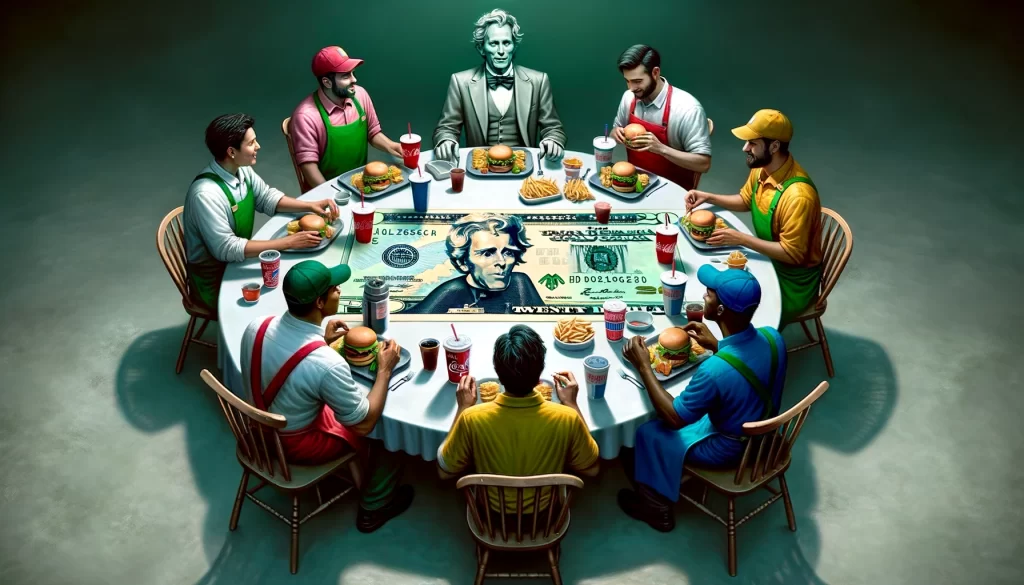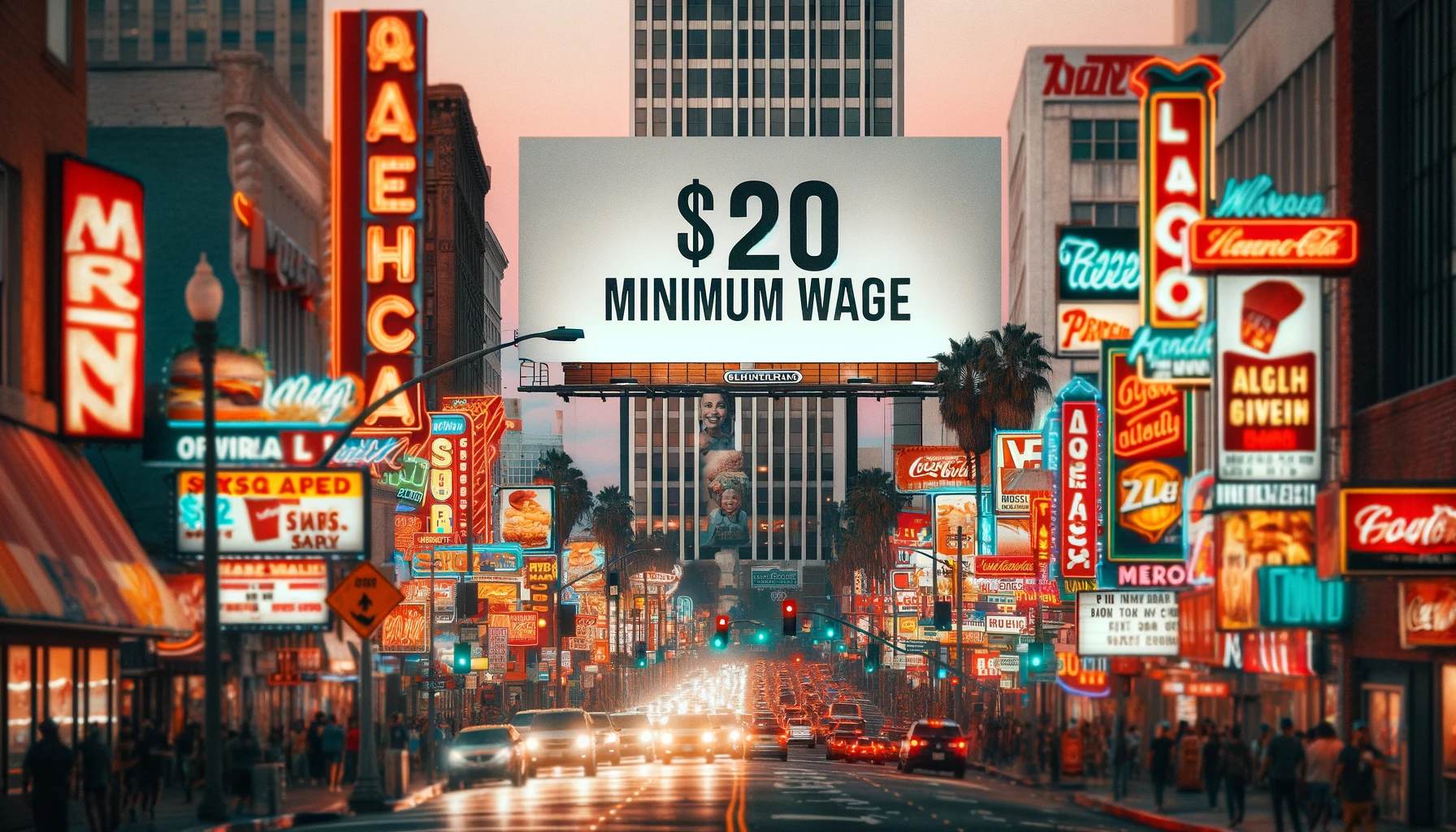In California starting this Monday, workers flipping burgers, making your favorite Frappuccinos, or taking your order at places like McDonald’s, Starbucks, Subway, and Pizza Hut will earn a minimum wage of $20 an hour. For many, this bump in pay marks a significant 25% increase in their earnings.
This new wage rule is quite unique because it specifically targets the fast-food industry, which employs around half a million people in California. Most of these workers are women, immigrants, and people of color, and a large number live below the poverty line. So, for them, this wage increase is a big deal.
Sandra Jauregui, who has been working at Jack in the Box for 18 years, is excited about her pay going from $17.50 to $20 an hour. This means she’ll get an extra $120 in her paycheck, which will help her cover rent and other bills more comfortably. She shares her joy in Spanish: “At the very least it’ll give me some breathing room … and make it easier to pay the rent and other bills.”
However, not everyone is celebrating. Some smaller fast-food franchise owners are worried. They say that to afford these higher wages, they might need to raise prices, cut worker hours, reduce jobs, or even close their businesses. This concern isn’t limited to small franchise owners; big names like Chipotle and McDonald’s have also warned of price increases to compensate for the higher wages.
The decision to increase the minimum wage to $20 for fast-food workers came from a deal between labor leaders and fast-food companies. This law applies to chains with at least 60 locations nationwide, excluding some bakeries and smaller outlets inside grocery stores, airports, and other venues. Despite the warnings of price hikes and the use of automation to reduce labor costs, this wage increase is seen as a victory for workers.

Interestingly, the fast-food industry might see a shift in how things operate. For instance, a major Pizza Hut franchisee mentioned layoffs of more than 1,000 delivery drivers this year, planning to rely more on delivery apps, which shifts delivery fees to shoppers.
This situation in California reflects a broader trend where the fight for higher minimum wages is happening at city, county, and state levels across the United States. California’s move to increase the minimum wage for fast-food workers is hoped to inspire similar changes in other industries and states.
As workers like Sandra Jauregui look forward to their increased paychecks, they also face uncertainty. The possibility of reduced hours or job cuts is a real concern. Yet, this wage hike is a significant step towards improving the lives of many workers in the fast-food industry, showing that change is possible even in sectors known for low pay and challenging working conditions.
Through this change, California is testing the waters for how a significant increase in minimum wage affects both the economy and the lives of workers. The outcome of this experiment will likely influence future decisions about wage policies not just in California, but across the country.
This article is based on the following article:
https://www.npr.org/2024/03/30/1241451631/california-fast-food-20-minimum-wage

Background Information
By understanding these concepts, readers can better appreciate the complexities and significance of the wage increase for California’s fast-food workers and its potential ripple effects across the economy and society.
What is Minimum Wage?
- Definition: The minimum wage is the lowest legal amount per hour that workers can be paid by their employers. It’s set by law to ensure that all workers can earn a basic standard of living to cover their essentials like food, shelter, and clothing.
- Purpose: The main goal is to protect workers from exploitation, ensuring they are paid fairly for their labor. It also helps reduce poverty and inequality in society.
The Fast-Food Industry
- Overview: This includes restaurants and outlets that serve food and drinks that are prepared quickly. Big names include McDonald’s, Starbucks, Subway, and Pizza Hut. These places are known for offering convenient, fast service and often, employment opportunities for many, including part-time workers, students, and those entering the workforce.
- Workforce: Typically, fast-food workers include cashiers, cooks, and drive-thru attendants. These jobs have traditionally been some of the lowest-paying positions in the U.S. economy.
Labor Unions and Workers’ Rights Movements
- Labor Unions: These are organizations that represent workers in various industries. They work to negotiate better wages, safer working conditions, and more benefits for their members. The Service Employees International Union (SEIU) is one such union that represents fast-food workers.
- Workers’ Rights Movements: Movements like the Fight for $15 campaign advocate for increasing the minimum wage to $15 per hour across all industries, arguing that this wage is the minimum needed for workers to afford basic living expenses.
Economic Factors
- Cost of Living: This refers to the amount of money needed to cover basic expenses such as housing, food, taxes, and healthcare in a certain place. California is known to have one of the highest costs of living in the United States.
- Inflation: A general increase in prices and fall in the purchasing value of money. When the article mentions that the cost of eating out has increased due to inflation, it means that money buys less than it used to, affecting both businesses and consumers.
The Role of Automation in the Workplace
- Automation: The use of technology to perform tasks without human intervention. In the fast-food industry, this could include using kiosks for ordering or robots for food preparation. While it can reduce labor costs for businesses, it also raises concerns about job loss among workers.
Impact of Wage Increases
- On Workers: Higher wages can significantly improve the quality of life for workers, allowing them to better meet their living expenses. However, there can be concerns about job stability or reduced hours as businesses adjust to higher labor costs.
- On Businesses: While paying higher wages increases costs for businesses, it can also lead to a happier, more motivated workforce. There’s a debate on whether these increased costs lead to higher prices for consumers or if businesses absorb the costs in other ways.
Case Studies and Research
- Seattle’s Minimum Wage Hike: Mentioned in the article, Seattle’s experience with raising the minimum wage offers insights into how such policies affect hours worked and overall earnings. It’s an important case study for understanding the potential outcomes of wage increases.

Debate/Essay Questions
- How do minimum wage increases affect small business owners versus large corporations?
- Can automation be a sustainable solution for businesses facing higher labor costs due to minimum wage increases?
- What is the role of labor unions in advocating for higher wages, and how effective are they?
Please subscribe to Insight Fortnight, our biweekly newsletter!
